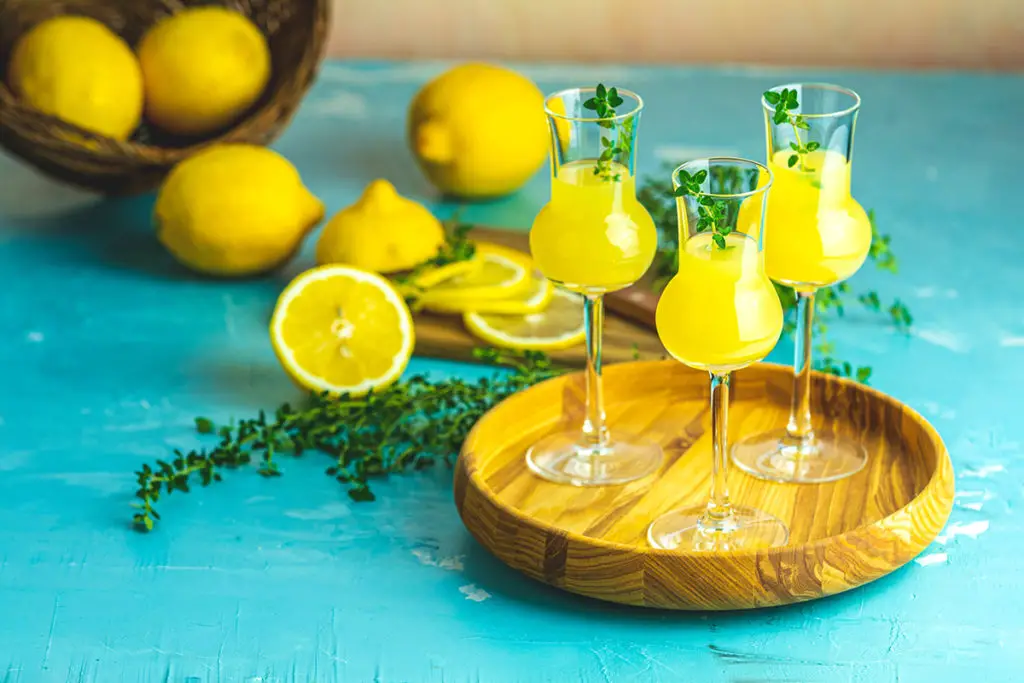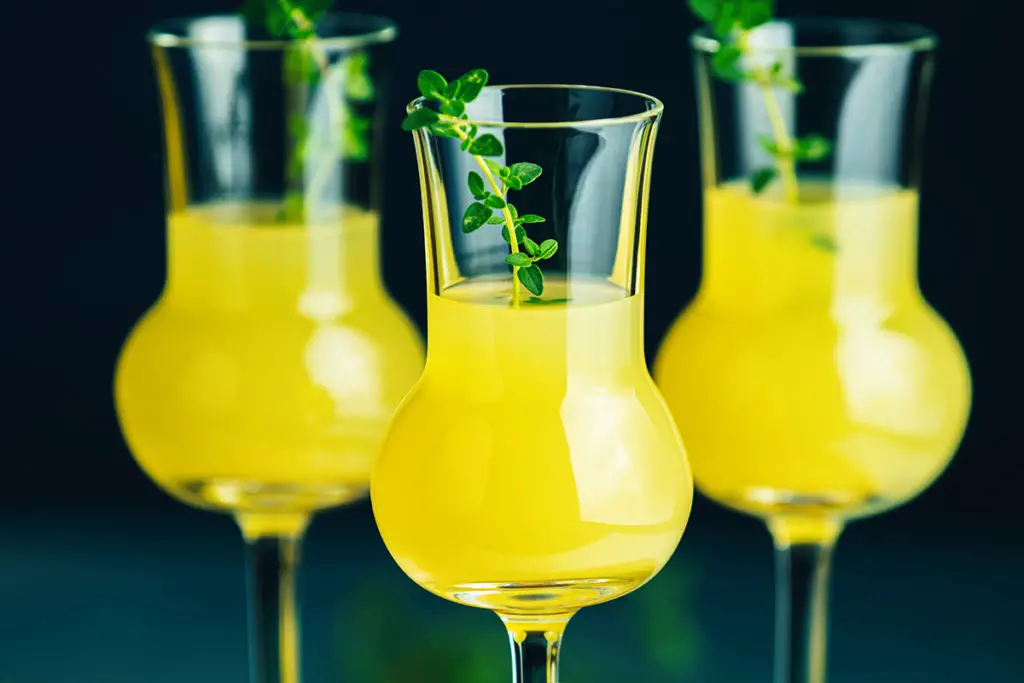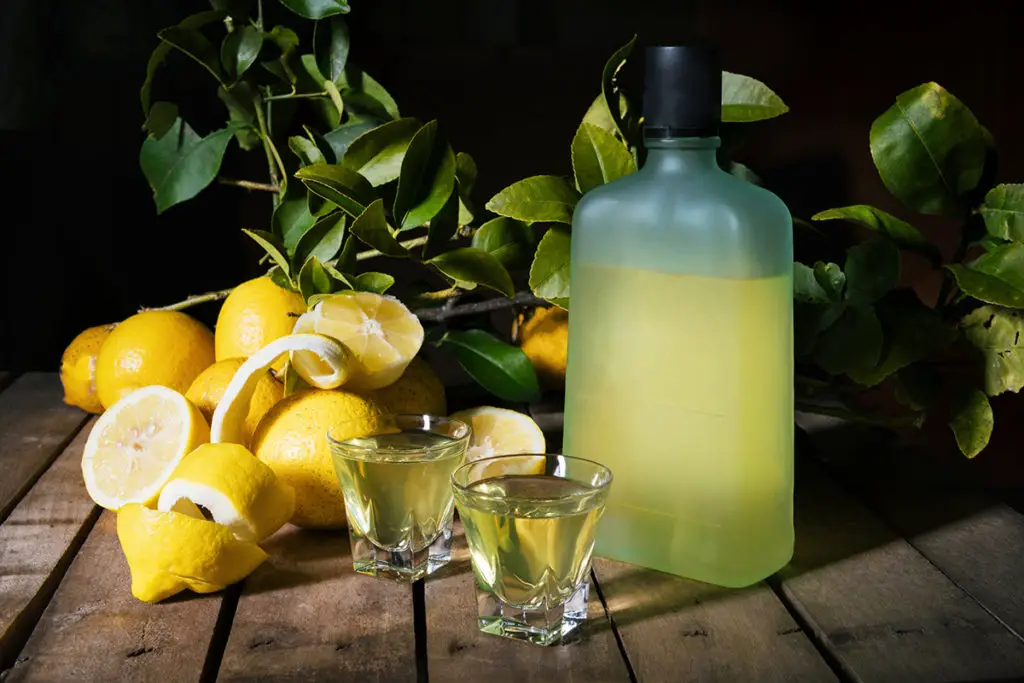Limoncello is a lemony, sweet alcoholic beverage. It’s typically served chilled and can be improved by mixing it with water, soda, or even vodka. Limoncello has been consumed as a digestif in Italy for generations.
If unopened and stored properly, Limoncello can last many years. However, once opened or if it is made from scratch, Limoncello should be consumed within seven days if stored at room temperature. If kept in the freezer, Limoncello can be consumed over the course of a year.
This post will explain how long Limoncello lasts and how to properly store it so you may enjoy it for as long as possible.
What Exactly Is Limoncello?
Limoncello is a well-known lemon liqueur with a long history. It can be made by a variety of methods, but the most traditional is to infuse alcohol with lemon peel and sugar. It’s a digestive aid that the Italians drink after dinner.

Shaker & Spoon - We bring the bar to you! It's the perfect home happy hour🍸→ Get Your Drink Box
Other drinks, such as frozen desserts or cocktails, can be made with Limoncello by adding simple syrup and ice. Limoncello is a lemon-flavored liqueur that has gained popularity in the United States, Canada, and New Zealand in recent years.
After Campari, Limoncello is the second most popular liqueur in Italy, but restaurants all over the world are beginning to include it on their menus. It’s frequently sold as a bottled cocktail that’s ready to drink, and it’s also on the wine lists of restaurants worldwide.
Limoncello recipes differ by country; for example, in Italy, it normally includes 30% alcohol by volume (ABV), although other versions marketed in North America contain around 15% ABV.
Limoncello is sometimes served chilled over ice with lemon or orange slices and club soda, which makes for a pleasant drink when combined with extra sweet syrup and coconut milk.
How Long Does Limoncello Last?
Unopened, Limoncello can last a long time. It may come as a surprise to learn that Limoncello can last several years if stored properly and left unopened.
Temperature is the most important element in regulating the shelf life of Limoncello. If you keep your bottle at room temperature and out of direct sunlight, it should be good to go for a year or more.
Once opened, a bottle of Limoncello should ideally be consumed within seven days. It can also be kept refrigerated for up to one month, but the taste will begin to deteriorate over time.
Limoncello can also be frozen for up to a year and still taste great. Alternatively, it can be kept chilled or, better yet, consumed immediately after making it.
Limoncello Stays Fresh for Years if Unopened
Limoncello is a liqueur with a high alcohol content (28 percent). As a result, it can be kept unopened for years with little to no loss of quality; however, once opened, I recommend drinking it within a matter of days to get the most out of the lemon flavor.
Limoncello often comes bottled with a hybrid cork/plastic capsule that can be resealed to keep the unfinished portion of the bottle fresh between servings.
Why Does My Limoncello Have a Cloudy Appearance?

Do you enjoy the flavor of Limoncello but are put off by its hazy appearance? Limoncellos have a tendency to fog if they’re kept too cold or for too long. This is referred to as “The Ouzo Effect.”
The ‘Ouzo Effect’
The ‘ouzo effect,’ named after the famed Mediterranean drink Ouzo, which becomes turbid when mixed with water and forms an emulsion, is a type of spontaneous emulsion creation. From a technical standpoint, Ouzo is quite similar to Limoncello because it’s made of water, ethanol, and a taste component known as anethole.
Store your bottle at room temperature away from direct sunlight to avoid this and maintain its crystal clear appearance. There’s nothing wrong with shaking up your bottle if it’s been sitting out for a while and has started to separate.
Is It Possible to Age Limoncello?
Have you ever wondered what happens to Limoncello once it’s bottled and sealed? The fact is that it may continue to age. While many people believe that once a bottle of Limoncello is sealed with a cork or cap and designated as “done,” that the aging process stops. This isn’t totally correct.
The term “aging” refers to how long you allow Limoncello to sit and age after bottling, not how long it takes to prepare it. We know that wine isn’t supposed to be consumed right after it’s been bottled and sealed, and the same may be true of Limoncello as it gradually changes in flavor with each passing day.
Some aficionados feel that aging can offer an older bottle greater depth and complexity in taste than when it was first made or bottled.
What Are the Signs That Limoncello Is Bad?
There are a variety of methods for determining if your Limoncello is bad, including smelling and tasting. If your Limoncello is bad, you need to throw it away. Drinking spoiled Limoncello may cause you to get sick.

Limoncello: Is There a Bad Odor or a Bad Taste?
Limoncello can spoil, and the first signs of this are a strange taste or smell. If there’s any evidence of mold on the bottle’s mouthpiece or cap, you should discard it right away. Because most of the lemon oil evaporates during manufacture, bacteria aren’t able to develop quickly. Therefore Limoncello doesn’t spoil as quickly either.
Once your Limoncello is opened, you don’t have to worry about it going bad due to tiny variations in temperature or humidity. It’s possible that if Limoncello gets murky or off-tasting within a short amount of time, it’s because too much lemon zest was used, resulting in more acidity and a shorter spoiling time.
Storing Limoncello
Long-term storage of Limoncello does not necessitate refrigeration. However, as is customary on the Amalfi Coast in southern Italy, I recommend chilling Limoncello for several hours before serving, either in the refrigerator or, better still, in the freezer.
Limoncello Recipe
Here are the things you’ll need to make a batch of homemade Limoncello if you’re inclined to make it yourself:
- 1 750 mL (25.36 oz) grain alcohol bottle
- 7-8 lemons, big (preferable to use organic lemon)
- 5 cup (1,182.94 mL) water
- 3 cup (603 g) sugar
- Large lidded container
- Veggie peeler
Here are the steps to make Limoncello:
- Begin by thoroughly cleaning all of the lemons. The lemons you use making Italian Limoncello should ideally be organic and never sprayed. This is significant since the peel will be used instead of the lemon juice in this recipe. I still wash my lemons, even if they’re organic. You can buy produce rinses to get rid of any leftover residue.
- Get a fine vegetable peeler and remove all of the lemons’ vivid yellow peels. When peeling, you want the peels to be as thin as possible, removing as little of the white “pith” as possible. The white substance might give the finished product a bitter taste, which you want to avoid as much as possible.
- Put all of the peels in the large jar that you’ll be using. It doesn’t matter if it’s made of glass or plastic, as long as it’s big enough to shake out its contents and has a tight-fitting lid that won’t leak during that shaking. Put a date on the exterior of the jar to keep track of when you began the process.
- Combine the grain alcohol and lemon peels in the jar.
- Place the jar in a cool, dry spot, such as a cupboard. It’ll remain in that location for one week. Take the jar out every day and, as previously stated, shake it vigorously. As the peels lose their color, the color of the liquid will (should) become more yellow each time you look into the jar.
- After one week, place the water and sugar in a pot on the fire and heat until the sugar dissolves completely. It doesn’t even have to simmer; all it requires is enough heat to dissolve the solids and make the liquid clear again. By the way, this is a type of simple syrup. I say “sort of” because the ratio isn’t quite 1:1, but you get the idea. Oh, and I once attempted to make Limoncello with the “raw” sugar, the one that isn’t totally white, and the resulting Limoncello tasted OK but had a weird brown film floating in it. Now I just use white sugar.
- Allow this sugar-and-water mixture to cool completely before using. Pour the lemon-alcohol mixture through a sieve, capturing the used peels in a basin while collecting the bright yellow alcohol.
- Combine the (mainly clear) yellow alcohol with the cooled (and clear) sugar-water combination. When the liquids are mixed together, they should turn a milky, foggy yellow appearance.
Follow along with the video below to make your own batch of delicious Limoncello.
Serving Limoncello
It can be served with dessert or enjoyed on its own after a meal. Limoncello is traditionally served chilled in a shot glass as an after-dinner drink or “digestivo,” as it’s known in Italy. Limoncello is also a great choice for cocktail parties with a wide range of hors d’oeuvres.
Why Is Limoncello Popular?
Limoncello is popular among Italians. As previously said, Limoncello is often served as a digestive, and it’s frequently provided after a huge dinner, and it’s even served as a complimentary drink at many Italian restaurants.
Oftentimes, Italians are devoted to their family recipes for Limoncello, and some even take them to their graves.
Conclusion
Because of the high alcohol concentration, Limoncello has a long shelf life. Yet, it’s preferable to make small batches and drink it right away.
Limoncello, however, can be preserved by storing it safely in the freezer for up to a year.
